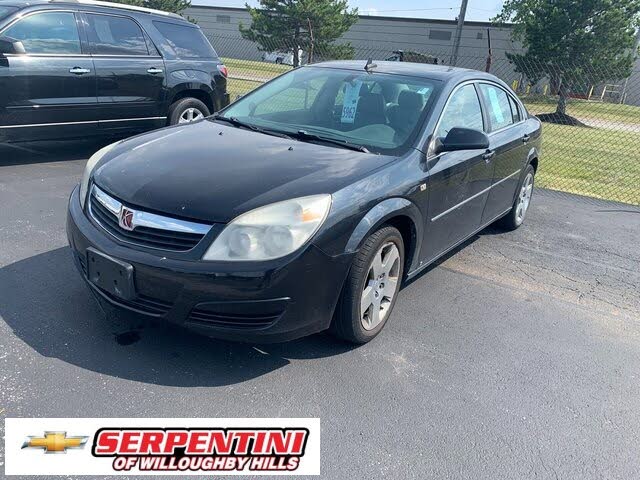
Rather, it's the build quality: Several parts weren't aligned, the trunk-release button came loose from the door, plastics ranged from good (dash top) to bad (shiny door-panel grab handles with fake stitching), and mold part lines were in evidence. The problem isn't so much with the design, although the Opel interior still strikes us as the better of the two. The controls and the gauges are well laid out, and the multiadjustable seat yields a comfortable driving position. It's a shame Saturn didn't copy the Vectra's interior as closely as its exterior. Some shoppers might head for a Toyota store after spending time in the Aura's interior. To our eyes, the Aura has a more sophisticated and cohesive design than its Japanese competition, and that, along with the $24,595 base price, should be good news for GM. The panel gaps are consistent and tight, the paint quality is excellent, and the headlights and taillights wouldn't look out of place on a $50,000 car. The Aura isn't identical to the Opel, but it would take parking them next to each other to pick out the differences. What makes the Aura most like its old-world compatriot, the Opel Vectra, is its exterior styling. The only thing that spoils the highway serenity is the Aura's light on-center steering that demands too many minute corrections to keep the car pointed straight. Ride quality, even on the optional 18-inch wheels, is compliant, if not soft. Double-paned front glass, a healthy dose of sound deadening, and laminated steel (dubbed Quiet Steel) go a long way toward canceling unwanted racket. Although our sound-level meter measured a very average 68 dBA of noise, it seemed to our ears to be the quietest car since a Rolls-Royce Phantom.

Despite nonlinear steering, the Aura feels willing, if not eager.ĭriving the Aura on the highway is like putting on a set of Bose noise-canceling headphones. Handling with the standard stability control disabled erred on the side of understeer with moderate body roll. Upshifts are smooth, but downshifts are harsh and jerky. For those who prefer to select their own gears, there are steering-wheel-mounted paddles (borrowed from the Corvette) that offer manumatic control. Much of this composure is due to a new six-speed automatic that anticipates one's passing needs like six well-trained bellhops. Hard acceleration from rest makes for torque steer and wheelspin, but above 30 or so mph the Aura collects itself and feels poised. In our test car, the powertrain produced an impressive 0-to-60 time of 6.2 seconds. The Aura XR we tested comes with the same 252-hp, 3.6-liter DOHC V-6 and six-speed automatic transmission that is available in the 2007 G6 GTP. The Saturn shares the G6's chassis setup of front struts and an independent rear suspension only the tuning is different.

The Opel, the Pontiac, and the Saturn are all built on the same Epsilon front-drive architecture, but the Vectra rides on a six-inch-shorter wheelbase than the Aura and G6. Think of the Aura as a Pontiac G6 in an Opel's lederhosen, and you'll get a realistic sense of it. The Aura isn't a made-in-Germany Opel - it's assembled in Kansas City, Kansas, but it carries enough Opel Vectra traits to sway a generation of buyers raised on German and Japanese cars - at least that's Saturn's hope. GM is set to turn at least part of the Saturn showroom into a pseudo-Opel showroom (Opel is the German part of the GM empire) with its 2007 Aura sedan and upcoming Ion replacement that will be based on the Opel Astra.


 0 kommentar(er)
0 kommentar(er)
